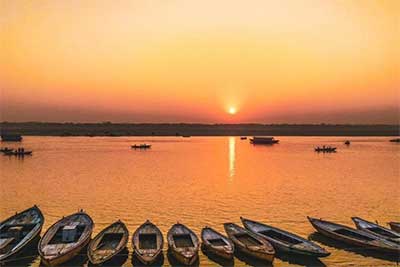Relevance: GS-3: Conservation, Environmental Pollution and Degradation, Environmental Impact Assessment.
Key phrases: National ganga mission, Aquifers, Sewage treatment plant
Why in news?
- Stage of completion of Ganga clean up mission was recently in news
Analysis:
What is the mission about?
- National Ganga Council, chaired by Prime Minister, has been given overall responsibility for the superintendence of pollution prevention and rejuvenation of River Ganga Basin, including Ganga and its tributaries.
- National Mission for Clean Ganga (NMCG) is the implementation arm of national Ganga Council.
- To ensure effective control of pollution and rejuvenation of the river Ganga by adopting a river basin approach to promote inter-sectoral coordination for comprehensive planning and management.
- To maintain minimum ecological flows in the river Ganga with the aim of ensuring water quality and environmentally sustainable development.
- It has a Rs. 20,000-crore, centrally-funded, non-lapsable corpus and consists of nearly 288 projects.
Importance/ Need of this mission
- Over 500 million citizens depend on the River Ganga for life itself, yet our National River remains one of the most polluted in the world.
- In Haridwar 100 million liters of sewage is dumped daily in Ganga
- In Allahabad 10k/ ml of focal coliform was detected while limit is 500/ ml
- In Kolkata nearly 90% of municipal drinking water is contaminated with fecal matter
How the mission is being implemented?
- Sewerage Treatment Capacity: 85+ Sewerage management projects are under implementation in the States of Uttarakhand, Uttar Pradesh, Bihar, Jharkhand and West Bengal.
- River-Front Development: River-Front Development projects for construction, modernization and renovation of 182 Ghats and 118 crematoria are underway.
- River Surface Cleaning: River Surface cleaning for collection of floating solid waste from the surface of the Ghats and River and its disposal are underway at multiple locations.
- Bio-Diversity Conservation: Several Bio-Diversity conservation projects namely: Biodiversity Conservation and Ganga Rejuvenation, Fish and Fishery Conservation in Ganga River, Ganges River Dolphin Conservation Education Programme have been initiated.
- Afforestation: Forestry interventions for Ganga through Wildlife Institute of India; Central Inland Fisheries Research Institute and Centre for Environment Education have been initiated.
- To encourage community participation in cleaning the river, an awareness campaign is regularly carried out in cities, towns, and villages alongside Ganga through a newly-established community force called “Ganga Praharis”.
Issues persisting with mission
- Inadequate Sewage treatment: In the Ganga basin approximately 12,000 million litres per day (mld) sewage is generated, for which presently there is a treatment capacity of only around 4,000 mld
- Lack of coordination -Jal Shakti ministry has signed MOU with 10 ministries but modalities are not clear.
- Decreased e-flow due to hydropower plants-If the flow in the river could be maintained, it would have itself taken care of 60-80 per cent of organic pollutants in the river.
- 99 per cent villages on the banks of the Ganga have been declared open defecation free (ODF) under the Swachh Bharat Mission. But just building new toilets, is not the solution. About 180 MLD of sludge will be generated in the five Ganga Basin states when they become ODF.
- Illegal Construction: The problem of illegal and rampant construction near river beds has become a major hurdle in cleaning the river.
- Draft NCR regional plan 2014 fixed 2026 as new deadline for zero
discharge in Yamuna but first deadline was set for 1992 -NGT and SC
have pulled up authorities several times
Success story - All projects in Uttarakhand are complete and there is an immediate change in the water quality of Haridwar. Its water quality is Class A (the highest grade of cleanliness according to India’s water quality monitoring standards)
- The Kanpur BOD used to be 10 at one point and now is three-four.
Way ahead
- People somehow don’t link groundwater to surface water. If wetlands aren’t healthy, it will affect ecological flow
- In order to successfully implement the plan there is a need for a strategic blueprint that includes the strict monitoring, mass awareness campaigns, use of digital media and conservation of biodiversity in Ganga.
- Organic agriculture: The cumulative use of pesticides has doubled in the last one decade and most of it runs off in our rivers
- Promote decentralised sewage treatment plants (DSTP) at the colony level. Reuse treated wastewater for irrigation and empty into natural drains
Source: The Hindu









